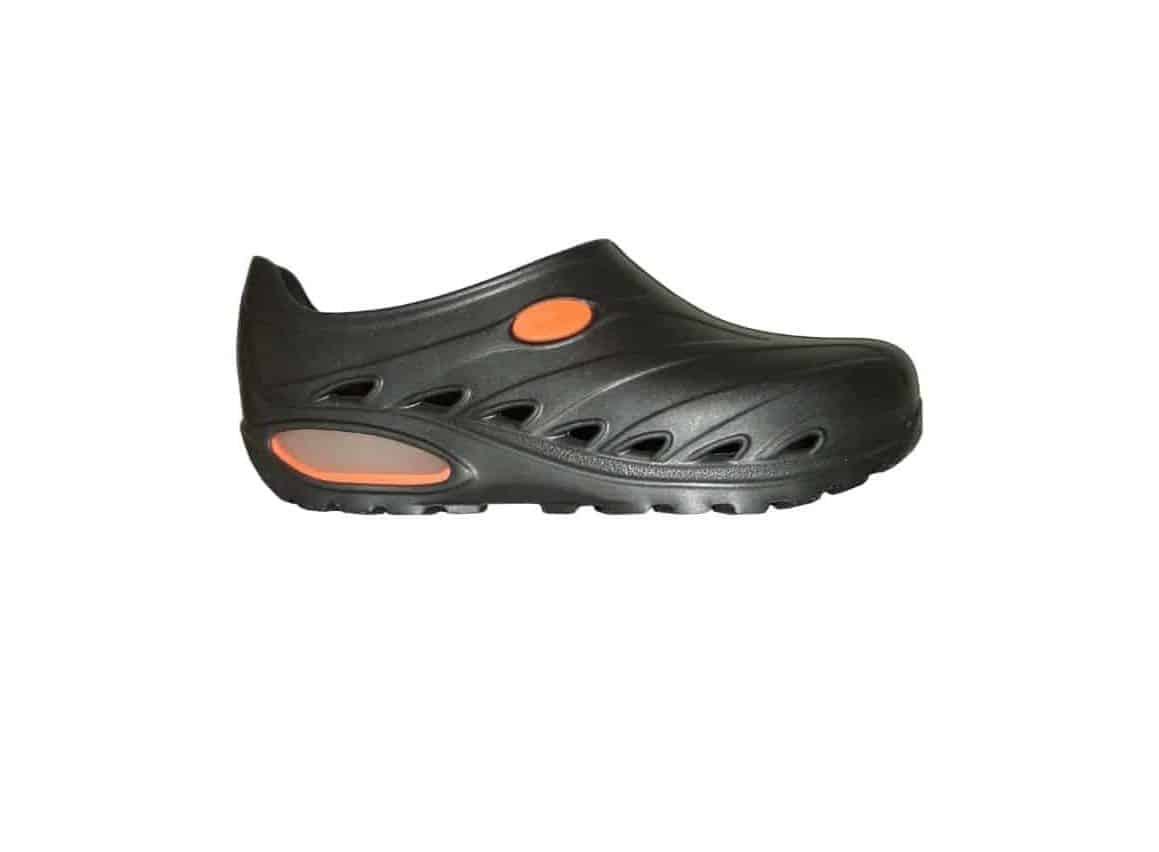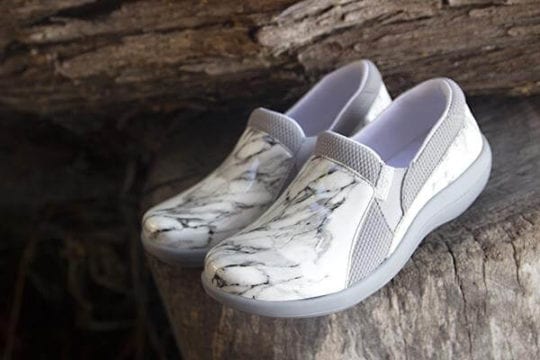As a nurse, you’re constantly on your feet, attending to patients and darting from room to room, sometimes for 12 hours at a stretch. This demanding profession can take a toll on your body, particularly your feet. One common issue many nurses face is plantar fasciitis, a painful condition that occurs when the tissue that runs along the bottom of your foot (the plantar fascia) becomes inflamed. Finding the right nursing shoes can make a significant difference in alleviating discomfort and supporting your feet throughout the day.
Understanding Plantar Fasciitis
Plantar fasciitis is one of the most common causes of heel pain. It typically presents as a sharp pain in the morning that tends to ease with movement but can return after prolonged periods of standing—something that nurses experience frequently. The condition is often exacerbated by poor footwear choices. Therefore, investing in appropriate nursing shoes specifically designed for plantar fasciitis is crucial.
Common Symptoms of Plantar Fasciitis
- Sharp pain in the heel or bottom of the foot.
- Increased pain after long periods of standing.
- Stiffness in the foot upon waking.
- Pain that worsens after physical activity.
Key Features to Look for in Nursing Shoes for Plantar Fasciitis

Choosing the right nursing shoes can significantly alleviate discomfort associated with plantar fasciitis. Here are some essential features to consider:
1. Arch Support
Good arch support helps distribute body weight evenly across the foot, reducing strain on the plantar fascia. Look for shoes that have built-in arch support or those that allow for custom orthotics.

2. Cushioning
High-quality cushioning absorbs shock and adds comfort during long shifts. Shoes with EVA foam or gel cushioning provide excellent support and comfort.
3. Lightweight Construction
Heavy shoes can add unnecessary fatigue to your feet. Lightweight shoes allow for greater comfort and less strain during long periods of standing or walking.

4. Breathability
Breathable materials, such as mesh uppers, help to keep your feet cool and dry, preventing blisters and discomfort throughout your shift.
5. Slip-Resistant Soles
As a nurse, you often work in environments where spills are commonplace. Slip-resistant soles reduce the risk of slips and falls, ensuring safety while maintaining comfort.

Top Nursing Shoes for Plantar Fasciitis
| Brand | Model | Features | Pros | Cons | Price | Rating |
|---|---|---|---|---|---|---|
| Dansko | Professional Clogs | Arch support, cushioned footbed, slip-resistant sole | Excellent support, durable | Heavier than sneakers | $129.95 | 4.7/5 |
| Skechers | Work Sure Track | Memory foam insole, slip-resistant outsole | Lightweight, stylish | Less arch support | $64.95 | 4.5/5 |
| New Balance | 997v3 | Cushioned midsole, breathable mesh | Great cushioning, excellent for all-day wear | Pricey | $109.99 | 4.6/5 |
| Brooks | Ghost 14 | DNA Loft cushioning, breathable | Responsive, comfortable | Limited color options | $139.95 | 4.8/5 |

Real-World Experiences: Nurses Share Their Favorite Footwear
Having the right shoes can be a game-changer for nurses. Here are a few testimonials from real nurses about their experiences with various shoe brands:

Testimonial: Emily R., RN
“I’ve been wearing Dansko clogs for years. They provide fantastic arch support and keep my feet from aching during long hours. Sure, they’re a bit heavier than other brands, but the comfort is worth it!”
Testimonial: James T., LPN
“Skechers Work Sure Track shoes have been a lifesaver for me. They’re super lightweight, and the memory foam insole feels like walking on clouds. Just wish they had a bit more arch support.”

Testimonial: Sarah Y., Nurse Practitioner
“I recently switched to Brooks Ghost shoes and couldn’t be happier. They provide excellent cushioning and are incredibly lightweight. My plantar fasciitis pain has significantly reduced since I made the switch!”
Tips for Choosing the Right Nursing Shoe
Here are some tips to keep in mind when shopping for nursing shoes for plantar fasciitis:
- Try shoes on later in the day when your feet are most swollen to ensure a proper fit.
- Consider purchasing insoles if your shoe lacks adequate arch support.
- Check for a return policy in case the shoes don’t provide the expected comfort.
- Wear your shoes around the house before your first shift to break them in.
Additional Considerations When Buying Nursing Shoes
Budgeting for Quality Footwear
Nursing shoes specifically designed for plantar fasciitis may be more expensive than standard shoes; however, it’s essential to see them as an investment in your health. The long-term benefits include reduced pain, improved posture, and overall better health.
When to Replace Your Shoes
It’s crucial to replace your nursing shoes regularly. Signs that it may be time for a new pair include:
- Visible wear and tear.
- Loss of cushioning and support.
- Increased discomfort during shifts.
Frequently Asked Questions (FAQs)
1. Can nursing shoes really help with plantar fasciitis?
Yes, nursing shoes with appropriate arch support, cushioning, and fit can significantly reduce pain associated with plantar fasciitis.
2. What features should I look for in nursing shoes?
Look for shoes with good arch support, cushioning, breathability, and slip-resistant soles to ensure comfort and safety.
3. Are clogs better than sneakers for nurses?
This depends on personal preference. Clogs often offer more arch support, while sneakers can provide better flexibility and cushioning. Try both to see what feels best.
4. How often should I replace my nursing shoes?
It’s recommended to replace your nursing shoes every 6-12 months, depending on wear and tear and personal comfort levels.
5. Do I need custom orthotics for plantar fasciitis?
Custom orthotics can provide additional support and comfort, especially if your plantar fasciitis is severe. Consulting a podiatrist is advisable.
6. How much should I expect to spend on good nursing shoes?
Quality nursing shoes typically range from $60 to $150. It’s worth investing in a pair that provides comfort and support.
7. Can I wash my nursing shoes?
Many nursing shoes can be washed, but it’s essential to follow the manufacturer’s care instructions for cleaning.
8. Are there any styles I should avoid if I have plantar fasciitis?
Avoid shoes that provide little to no arch support, lack cushioning, or have very flat soles, as these can exacerbate plantar fasciitis symptoms.
9. Is there a break-in period for nursing shoes?
Yes, it’s a good idea to wear your shoes around the house for a short period before your first shift to ensure they are comfortable and to avoid blisters.
10. Do all nursing shoes come with slip-resistant soles?
No, not all nursing shoes are slip-resistant. It’s crucial to check the product specifications to ensure safety in a clinical environment.
11. What is the best time of day to try on nursing shoes?
Try on shoes later in the day when your feet are more swollen to ensure the best fit, as feet tend to swell throughout the day.
In summary, finding the best nursing shoes for plantar fasciitis can significantly improve your comfort and well-being while working long shifts. With the right features and support, you can help alleviate pain and prevent injury. Invest in your health today by choosing the right footwear.
For more detailed information about plantar fasciitis and its treatment, you might consider checking out Foot Health Facts.